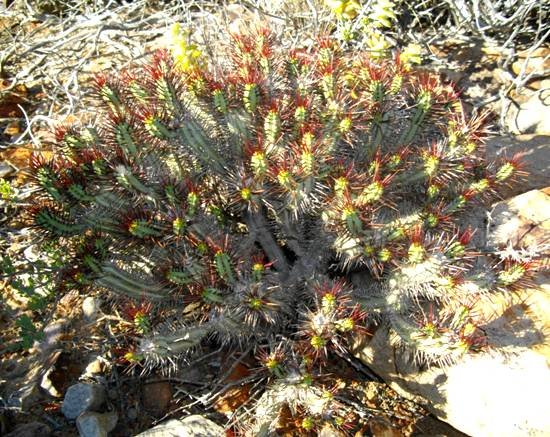Euphorbia heptagona

Author: Ivan Lätti
Photographer: Thabo Maphisa
Euphorbia heptagona, the klipnoors (stone euphorbia) or donkienoors (donkey euphorbia), grows many stems branched at the base or higher up. The stem succulent reaches 1 m in height when conditions permit, often only 30 cm in its habitat that ranges across several levels of harshness. Tiny leaves are seen for a short while on new growth at stem tips only.
The stem succulent earned the specific name of heptagona from the fact that the most common number of stem ridges is seven; hepta means seven in Greek, gonia means angle, also Greek. The species now includes the earlier E. enopla or boknoors (goat or antelope euphorbia or spurge), E. atrispina or swartdoringnoors (black thorn spurge) and some varieties of those.
The species distribution ranges across parts of the Karoo and the Little Karoo, from Touws River and Montagu in the Western Cape to Jansenville in the Eastern Cape. This plant was seen near the end of May in the Rooiberg.
The habitat is rocky slopes and outcrops among dry karoid scrub in various soils types. The species is not considered threatened in habitat early in the twenty first century (Euston-Brown and Kruger, 2023; Smith, et al, 2017; Vlok and Schutte-Vlok, 2015; iNaturalist; iSpot; http://redlist.sanbi.org).

